What to do if HERO Motorcycle side stand engine kill system is not working?
- KkmartinezAug 1, 2025
If you are experiencing issues with the side stand engine kill system on your HERO Motorcycle, ensure the side stand is moved up.
What to do if HERO Motorcycle side stand engine kill system is not working?
If you are experiencing issues with the side stand engine kill system on your HERO Motorcycle, ensure the side stand is moved up.
Welcomes the user and thanks them for choosing the vehicle, setting a positive tone.
Outlines Hero MotoCorp's commitment to environmental performance and compliance.
States the vehicle conforms to Bharat Stage-VI norms for emission, safety, and noise.
Explains the mandated Automatic Headlamp ON feature for rider safety.
Describes the booklet as a guide for operation and maintenance.
Emphasizes the necessity of proper care and maintenance for trouble-free operation.
Mentions dealer assistance for information and service needs.
Concludes with a vision for a safer, healthier, and more environment-friendly place.
Details the locations for stamping the Vehicle Identification Number (VIN) and Engine Number.
Explains the components and meaning of the Vehicle Identification Number.
Details the structure and meaning of the Engine Number.
Lists the available variants for the XTREME 200S PROGRAMMED FI model.
Identifies the front fender of the vehicle.
Identifies the front right and left turn signal lamps.
Identifies the front position lamps.
Identifies the front visor.
Identifies the main headlamp assembly.
Identifies the engine oil cooler.
Identifies the left and right rear turn signal lamps.
Identifies the combined tail and stop lamp assembly.
Identifies the lamp for the license plate.
Identifies the rear reflex reflector.
Identifies the rear fender.
Identifies various switches and levers on the handlebar.
Identifies components of the meter console and indicators.
Identifies the ignition switch and electric starter switch.
Identifies frame components, under cowl, and side faring.
Identifies starter motor, gear shift pedal, main stand.
Identifies seat lock and battery compartment.
Identifies rear master cylinder, rear brake pedal, front/rear disc.
Identifies oil level dipstick, rear brake fluid reservoir.
Identifies seat, fuse box, document compartment, exhaust muffler.
Lists overall dimensions, wheelbase, ground clearance, and kerb weight.
Details engine oil, fuel tank, and hydraulic brake fluid capacities.
Lists maximum power, torque, bore, stroke, compression, displacement, spark plug, valve clearance, and idle speed.
Provides specifications for front/rear brakes and transmission gear ratios.
Lists specifications for battery, alternator, lamps, indicators, and fuses.
Advises on selecting accessories that do not affect vehicle performance or safety.
Warns against exceeding the vehicle's electrical system capacity.
Advises against using trailers or sidecars due to potential handling impairment.
Strongly advises against modifying original equipment.
Provides tips for preventing vehicle theft.
Emphasizes paying attention to other vehicles and being prepared for maneuvers.
Suggests wearing bright clothing and positioning for visibility.
Advises against exceeding personal abilities or challenging conditions.
Stresses the dangers of riding under the influence of alcohol or drugs.
Recommends regular inspection and maintenance.
Highlights the importance of helmets for reducing head injury severity.
Covers pre-ride checks for rider fitness and protective gear.
Encourages practicing riding in a safe area to become familiar with the vehicle.
Provides guidance on assessing injuries and vehicle condition after an accident.
Details the importance of helmets and eye protection for rider safety.
Recommends wearing approved helmet, eye protection, boots, gloves, and clothing.
Suggests sturdy boots, leather gloves, and riding suits for comfort and protection.
Lists essential practices for safe riding.
Lists actions to avoid for safe riding.
Provides specific advice for riding with ABS, including braking and indicators.
Stresses regular tuning for reduced pollution and improved performance.
Recommends authorized servicing and genuine parts.
Specifies the recommended engine oil and fuel type.
Addresses noise pollution and emission checks.
Advises on switching off the engine at signals and using BS-VI fuel.
Explains the "ON", "OFF", and "LOCK" positions of the ignition switch.
Details when the ignition key can be removed from each position.
Describes the purpose and operation of various dashboard indicators like Tachometer, ABS, Turn signals.
Explains further indicators like MIL, Mode/Set buttons, service reminders, odometer, speedometer, clock, and gear indicator.
Guides on setting the hour and minute for the digital clock.
Explains how to view and reset the odometer and tripmeter functions.
Guides on updating the current date displayed on the panel.
Details the step-by-step process for setting the year, month, and day.
Explains how to read the fuel level using digital segments.
Describes the service reminder indicator and next service distance display.
Explains the function and operation of the engine stop/kill switch.
Describes the ECO mode for optimizing fuel efficiency.
Explains the gear indicator and shift up/down suggestions.
Introduces the Hero navigation application for smartphone connectivity.
Guides on pairing the smartphone with the meter console via Bluetooth.
Explains how incoming call alerts are displayed on the digital cluster.
Describes how missed call alerts are displayed, including quantity.
Explains the low battery alert symbol for the paired smartphone.
Details the procedure for locking the steering wheel.
Explains operation of headlamp high/low beam and pass lamp.
Details the operation of the turn signal switch.
Explains how to operate the horn.
Describes the safety function of the clutch switch.
Explains the operation and caution for the electric starter switch.
Details the function and emergency use of the engine stop/kill switch.
Explains the ABS indicator light and its meaning.
Describes the side stand indicator and its switch operation.
Explains the safety feature that kills the engine when the side stand is down.
Provides a step-by-step diagram to inspect the functionality of the side stand engine kill feature.
Details the fuel tank capacity and precautions for refilling.
Explains how to unlock and lock the fuel tank cap.
Advises against parking in direct sunlight due to petrol evaporation.
Describes how to unlock and secure the seat.
Explains the location and use of the helmet holder.
Outlines essential checks before riding for safety and comfort.
Lists various components to check before riding, including fluids, brakes, tires, and lights.
Details the correct procedure for starting the engine safely.
Warns about avoiding extended idling to protect the catalytic converter.
Outlines pre-start checks like ignition switch, MIL, neutral indicator, and engine stop switch.
Explains the procedure for starting using the electric starter or kick starter.
Details starting procedures, including fuel injection and flooded engine scenarios.
Explains the bank angle sensor feature that cuts ignition upon falling.
Advises on care during the first 500 km for reliability and performance.
Guides on shifting gears smoothly after the engine is warmed up.
Lists checks for mirrors, engine stop switch, fasteners, steering, and side stand.
Reiterate safety precautions for starting the engine and using the side stand kill feature.
Explains the meaning of the MIL indicator remaining ON after starting.
Details steps to take if the engine is flooded with fuel.
Explains how to restart after the vehicle has fallen.
Explains the function and benefits of the ABS system.
Identifies the wheel speed sensor, HECU, and ABS indicator.
Details how ABS works, what to expect, and warnings.
Provides essential advice on using and maintaining the ABS system.
Advises on safe parking practices on level ground and side stand.
Lists the items included in the vehicle's tool kit.
Lists the items included in the vehicle's first aid kit.
Provides guidelines for safely washing the vehicle.
Explains why regular maintenance is crucial for safety and performance.
Outlines safety measures to follow during maintenance tasks.
Lists precautions like turning the engine OFF, ventilation, and avoiding hot parts.
Advises on precautions when working with petrol, batteries, and sparks.
Recommends using authorized workshops and genuine parts.
Explains the codes used in the maintenance schedule (I, C, R, A, L, O, T, E).
Details general guidelines for service intervals and workshop recommendations.
Provides specific notes for items like air cleaner, engine oil, and drive chain.
Lists maintenance tasks, service intervals (days/km), and operations (I, C, A, O, T, L) for various components.
Lists further maintenance tasks and intervals for battery, brakes, switches, and suspension.
Specifies the recommended spark plug and its gap measurement.
Details the procedure for removing, inspecting, and installing the spark plug.
Provides critical warnings regarding spark plug testing and usage.
Lists the recommended engine oil brand, grade, and capacity.
Explains how to check the engine oil level using the dipstick.
Details checking oil circulation via the engine oil check bolt.
Describes the process for draining old oil and filling new oil.
Explains how to access and clean these components.
Details cleaning the centrifugal filter and reassembling related parts.
Provides instructions for inspecting and cleaning the oil cooler.
Explains the air cleaner element type and replacement intervals.
Identifies the location of the fuse boxes.
Details the steps for removing, replacing, and installing the air cleaner element.
Explains how to clean the air cleaner drain tube.
Explains the impact of incorrect valve clearance on engine performance.
Details the steps for checking valve clearance, including flywheel rotation and TDC.
Guides on adjusting valve clearance using feeler gauges and lock nuts.
Explains how to adjust the free play in the clutch lever.
Details how to inspect the throttle grip and cable for smooth operation.
Guides on adjusting the free play of the throttle grip.
Advises on checking the clutch cable for wear and kinks.
Explains how to check and measure drive chain slack.
Details the procedure for adjusting drive chain slack.
Advises on the correct orientation of the chain lock plate.
Lists common conditions of wear and damage for the drive chain.
Lists common conditions of wear and damage for the sprockets.
Advises on replacing the drive chain and sprockets as a set.
Outlines steps for adjusting drive chain slack.
Recommends when to lubricate the drive chain.
Details how to clean the drive chain using chain cleaner and brush.
Provides notes on using recommended lubricants and precautions.
Explains how to inspect the chain slider for wear.
Explains how to check brake pad wear using the indicator groove.
Guides on checking the rear mono shock absorber for smoothness and leaks.
Details how to adjust the rear mono shock absorber for load/road conditions.
Explains how to check the front brake fluid level and for leaks.
Advises on cleaning dirt and mud from the front brake caliper and pads.
Explains how to check the rear brake fluid level and for leaks.
Advises on cleaning the rear brake caliper and refilling the reservoir.
Guides on inspecting front and rear brake pads for wear.
Describes how to check the front forks for smooth action and oil leaks.
Mentions the tool used for adjusting the rear mono shock absorber.
Details the steps to remove the front wheel, including sensors and collars.
Explains the process for installing the front wheel.
Details the steps to remove the rear wheel, including axle and collars.
Explains the process for installing the rear wheel, including caliper alignment.
Guides on lubricating the main and side stands.
Introduces tubeless tire operation and inspection requirements.
Warns about hazards of worn or improperly inflated tires.
Lists recommended cold tire pressures for rider only and rider/pillion.
Advises on checking tire pressure, wear, damage, and foreign objects.
Explains how to identify tread wear using indicators and minimum depth.
Advises on correct tire rotation direction after puncture repair.
Recommends visiting authorized dealers for tire repair and notes limitations of repaired tires.
Specifies speed and load limitations for new tires.
Lists the recommended tire sizes and types.
Warns against installing tubes in tubeless tires.
Advises checking and tightening nuts and bolts at regular intervals.
Identifies the battery location and its specification (MF Battery).
Explains that electrolyte level does not need checking for MF batteries.
Advises on battery charging procedures and storage for extended periods.
Details the steps for safely removing the battery.
Guides on installing the battery correctly, connecting terminals.
Identifies the locations of fuse boxes (A & B) and fuse types.
Lists the main and spare fuse ratings for fuse boxes A and B.
Explains the location and function of the starter magnetic switch.
Warns against using incorrect fuse ratings and handling charged batteries.
Details how to adjust the stop lamp switch for proper operation.
Guides on adjusting the headlamp beam for correct focus.
Explains the role of the catalytic converter and precautions to protect it.
Describes the function of the evaporative emission control system.
Explains the function of the canister in collecting fuel vapor.
Advises on polishing painted surfaces and notes on matte paint finishes.
Troubleshoots starting issues related to the engine stop/kill switch position.
Troubleshoots starting issues related to the side stand engine kill system.
Troubleshoots starting issues related to the fuel system, including gauge, lines, and pump.
Troubleshoots issues with the electric starter, checking fuses, battery, and connections.
Troubleshoots lack of spark issues related to ignition switch, spark plug, and wiring.
Troubleshoots engine stalling issues related to fuel lines and air cleaner.
Troubleshoots poor pick-up related to spark plug, air cleaner, brake binding, and tire pressure.
Troubleshoots issues with horn sound or lighting, checking fuses, battery, bulbs, and connections.
Explains the purpose and penalties for violating mandatory road signs.
Explains the purpose of cautionary road signs as warnings.
Describes the purpose of informatory signs providing directions and facility information.
Illustrates various signs displayed by the navigation app for guidance.
Outlines what the warranty covers for XTREME 200S vehicles.
Details the terms and conditions for the vehicle warranty, including service requirements.
Lists conditions and actions that void the vehicle warranty.
Specifies the warranty duration for the vehicle's battery.
Details the terms and conditions applicable to battery warranty claims.
Outlines the scope and validity period of the emission warranty.
Details the terms and conditions for emission warranty, including maintenance requirements.
Clarifies mandatory PUC certificates and responsible parties for compliance.
Lists conditions that render the emission warranty invalid, such as misuse or tampering.
Lists the advantages of using genuine Hero MotoCorp spare parts.
Details damages from using non-genuine clutch plates, cam chain kits, and gaskets.
Details damages from using non-genuine air cleaners, spark plugs, and brake pads/shoes.
Details damages from using non-genuine chain sprocket kits.
Lists contact details for Hero MotoCorp offices in the Central Zone.
Lists contact details for Hero MotoCorp offices in the East Zone.
Lists contact details for Hero MotoCorp offices in the North Zone.
Lists contact details for Hero MotoCorp offices in the South Zone.
Lists contact details for Hero MotoCorp offices in the West Zone.
Welcomes the user and thanks them for choosing the vehicle, setting a positive tone.
Outlines Hero MotoCorp's commitment to environmental performance and compliance.
States the vehicle conforms to Bharat Stage-VI norms for emission, safety, and noise.
Explains the mandated Automatic Headlamp ON feature for rider safety.
Describes the booklet as a guide for operation and maintenance.
Emphasizes the necessity of proper care and maintenance for trouble-free operation.
Mentions dealer assistance for information and service needs.
Concludes with a vision for a safer, healthier, and more environment-friendly place.
Details the locations for stamping the Vehicle Identification Number (VIN) and Engine Number.
Explains the components and meaning of the Vehicle Identification Number.
Details the structure and meaning of the Engine Number.
Lists the available variants for the XTREME 200S PROGRAMMED FI model.
Identifies the front fender of the vehicle.
Identifies the front right and left turn signal lamps.
Identifies the front position lamps.
Identifies the front visor.
Identifies the main headlamp assembly.
Identifies the engine oil cooler.
Identifies the left and right rear turn signal lamps.
Identifies the combined tail and stop lamp assembly.
Identifies the lamp for the license plate.
Identifies the rear reflex reflector.
Identifies the rear fender.
Identifies various switches and levers on the handlebar.
Identifies components of the meter console and indicators.
Identifies the ignition switch and electric starter switch.
Identifies frame components, under cowl, and side faring.
Identifies starter motor, gear shift pedal, main stand.
Identifies seat lock and battery compartment.
Identifies rear master cylinder, rear brake pedal, front/rear disc.
Identifies oil level dipstick, rear brake fluid reservoir.
Identifies seat, fuse box, document compartment, exhaust muffler.
Lists overall dimensions, wheelbase, ground clearance, and kerb weight.
Details engine oil, fuel tank, and hydraulic brake fluid capacities.
Lists maximum power, torque, bore, stroke, compression, displacement, spark plug, valve clearance, and idle speed.
Provides specifications for front/rear brakes and transmission gear ratios.
Lists specifications for battery, alternator, lamps, indicators, and fuses.
Advises on selecting accessories that do not affect vehicle performance or safety.
Warns against exceeding the vehicle's electrical system capacity.
Advises against using trailers or sidecars due to potential handling impairment.
Strongly advises against modifying original equipment.
Provides tips for preventing vehicle theft.
Emphasizes paying attention to other vehicles and being prepared for maneuvers.
Suggests wearing bright clothing and positioning for visibility.
Advises against exceeding personal abilities or challenging conditions.
Stresses the dangers of riding under the influence of alcohol or drugs.
Recommends regular inspection and maintenance.
Highlights the importance of helmets for reducing head injury severity.
Covers pre-ride checks for rider fitness and protective gear.
Encourages practicing riding in a safe area to become familiar with the vehicle.
Provides guidance on assessing injuries and vehicle condition after an accident.
Details the importance of helmets and eye protection for rider safety.
Recommends wearing approved helmet, eye protection, boots, gloves, and clothing.
Suggests sturdy boots, leather gloves, and riding suits for comfort and protection.
Lists essential practices for safe riding.
Lists actions to avoid for safe riding.
Provides specific advice for riding with ABS, including braking and indicators.
Stresses regular tuning for reduced pollution and improved performance.
Recommends authorized servicing and genuine parts.
Specifies the recommended engine oil and fuel type.
Addresses noise pollution and emission checks.
Advises on switching off the engine at signals and using BS-VI fuel.
Explains the "ON", "OFF", and "LOCK" positions of the ignition switch.
Details when the ignition key can be removed from each position.
Describes the purpose and operation of various dashboard indicators like Tachometer, ABS, Turn signals.
Explains further indicators like MIL, Mode/Set buttons, service reminders, odometer, speedometer, clock, and gear indicator.
Guides on setting the hour and minute for the digital clock.
Explains how to view and reset the odometer and tripmeter functions.
Guides on updating the current date displayed on the panel.
Details the step-by-step process for setting the year, month, and day.
Explains how to read the fuel level using digital segments.
Describes the service reminder indicator and next service distance display.
Explains the function and operation of the engine stop/kill switch.
Describes the ECO mode for optimizing fuel efficiency.
Explains the gear indicator and shift up/down suggestions.
Introduces the Hero navigation application for smartphone connectivity.
Guides on pairing the smartphone with the meter console via Bluetooth.
Explains how incoming call alerts are displayed on the digital cluster.
Describes how missed call alerts are displayed, including quantity.
Explains the low battery alert symbol for the paired smartphone.
Details the procedure for locking the steering wheel.
Explains operation of headlamp high/low beam and pass lamp.
Details the operation of the turn signal switch.
Explains how to operate the horn.
Describes the safety function of the clutch switch.
Explains the operation and caution for the electric starter switch.
Details the function and emergency use of the engine stop/kill switch.
Explains the ABS indicator light and its meaning.
Describes the side stand indicator and its switch operation.
Explains the safety feature that kills the engine when the side stand is down.
Provides a step-by-step diagram to inspect the functionality of the side stand engine kill feature.
Details the fuel tank capacity and precautions for refilling.
Explains how to unlock and lock the fuel tank cap.
Advises against parking in direct sunlight due to petrol evaporation.
Describes how to unlock and secure the seat.
Explains the location and use of the helmet holder.
Outlines essential checks before riding for safety and comfort.
Lists various components to check before riding, including fluids, brakes, tires, and lights.
Details the correct procedure for starting the engine safely.
Warns about avoiding extended idling to protect the catalytic converter.
Outlines pre-start checks like ignition switch, MIL, neutral indicator, and engine stop switch.
Explains the procedure for starting using the electric starter or kick starter.
Details starting procedures, including fuel injection and flooded engine scenarios.
Explains the bank angle sensor feature that cuts ignition upon falling.
Advises on care during the first 500 km for reliability and performance.
Guides on shifting gears smoothly after the engine is warmed up.
Lists checks for mirrors, engine stop switch, fasteners, steering, and side stand.
Reiterate safety precautions for starting the engine and using the side stand kill feature.
Explains the meaning of the MIL indicator remaining ON after starting.
Details steps to take if the engine is flooded with fuel.
Explains how to restart after the vehicle has fallen.
Explains the function and benefits of the ABS system.
Identifies the wheel speed sensor, HECU, and ABS indicator.
Details how ABS works, what to expect, and warnings.
Provides essential advice on using and maintaining the ABS system.
Advises on safe parking practices on level ground and side stand.
Lists the items included in the vehicle's tool kit.
Lists the items included in the vehicle's first aid kit.
Provides guidelines for safely washing the vehicle.
Explains why regular maintenance is crucial for safety and performance.
Outlines safety measures to follow during maintenance tasks.
Lists precautions like turning the engine OFF, ventilation, and avoiding hot parts.
Advises on precautions when working with petrol, batteries, and sparks.
Recommends using authorized workshops and genuine parts.
Explains the codes used in the maintenance schedule (I, C, R, A, L, O, T, E).
Details general guidelines for service intervals and workshop recommendations.
Provides specific notes for items like air cleaner, engine oil, and drive chain.
Lists maintenance tasks, service intervals (days/km), and operations (I, C, A, O, T, L) for various components.
Lists further maintenance tasks and intervals for battery, brakes, switches, and suspension.
Specifies the recommended spark plug and its gap measurement.
Details the procedure for removing, inspecting, and installing the spark plug.
Provides critical warnings regarding spark plug testing and usage.
Lists the recommended engine oil brand, grade, and capacity.
Explains how to check the engine oil level using the dipstick.
Details checking oil circulation via the engine oil check bolt.
Describes the process for draining old oil and filling new oil.
Explains how to access and clean these components.
Details cleaning the centrifugal filter and reassembling related parts.
Provides instructions for inspecting and cleaning the oil cooler.
Explains the air cleaner element type and replacement intervals.
Identifies the location of the fuse boxes.
Details the steps for removing, replacing, and installing the air cleaner element.
Explains how to clean the air cleaner drain tube.
Explains the impact of incorrect valve clearance on engine performance.
Details the steps for checking valve clearance, including flywheel rotation and TDC.
Guides on adjusting valve clearance using feeler gauges and lock nuts.
Explains how to adjust the free play in the clutch lever.
Details how to inspect the throttle grip and cable for smooth operation.
Guides on adjusting the free play of the throttle grip.
Advises on checking the clutch cable for wear and kinks.
Explains how to check and measure drive chain slack.
Details the procedure for adjusting drive chain slack.
Advises on the correct orientation of the chain lock plate.
Lists common conditions of wear and damage for the drive chain.
Lists common conditions of wear and damage for the sprockets.
Advises on replacing the drive chain and sprockets as a set.
Outlines steps for adjusting drive chain slack.
Recommends when to lubricate the drive chain.
Details how to clean the drive chain using chain cleaner and brush.
Provides notes on using recommended lubricants and precautions.
Explains how to inspect the chain slider for wear.
Explains how to check brake pad wear using the indicator groove.
Guides on checking the rear mono shock absorber for smoothness and leaks.
Details how to adjust the rear mono shock absorber for load/road conditions.
Explains how to check the front brake fluid level and for leaks.
Advises on cleaning dirt and mud from the front brake caliper and pads.
Explains how to check the rear brake fluid level and for leaks.
Advises on cleaning the rear brake caliper and refilling the reservoir.
Guides on inspecting front and rear brake pads for wear.
Describes how to check the front forks for smooth action and oil leaks.
Mentions the tool used for adjusting the rear mono shock absorber.
Details the steps to remove the front wheel, including sensors and collars.
Explains the process for installing the front wheel.
Details the steps to remove the rear wheel, including axle and collars.
Explains the process for installing the rear wheel, including caliper alignment.
Guides on lubricating the main and side stands.
Introduces tubeless tire operation and inspection requirements.
Warns about hazards of worn or improperly inflated tires.
Lists recommended cold tire pressures for rider only and rider/pillion.
Advises on checking tire pressure, wear, damage, and foreign objects.
Explains how to identify tread wear using indicators and minimum depth.
Advises on correct tire rotation direction after puncture repair.
Recommends visiting authorized dealers for tire repair and notes limitations of repaired tires.
Specifies speed and load limitations for new tires.
Lists the recommended tire sizes and types.
Warns against installing tubes in tubeless tires.
Advises checking and tightening nuts and bolts at regular intervals.
Identifies the battery location and its specification (MF Battery).
Explains that electrolyte level does not need checking for MF batteries.
Advises on battery charging procedures and storage for extended periods.
Details the steps for safely removing the battery.
Guides on installing the battery correctly, connecting terminals.
Identifies the locations of fuse boxes (A & B) and fuse types.
Lists the main and spare fuse ratings for fuse boxes A and B.
Explains the location and function of the starter magnetic switch.
Warns against using incorrect fuse ratings and handling charged batteries.
Details how to adjust the stop lamp switch for proper operation.
Guides on adjusting the headlamp beam for correct focus.
Explains the role of the catalytic converter and precautions to protect it.
Describes the function of the evaporative emission control system.
Explains the function of the canister in collecting fuel vapor.
Advises on polishing painted surfaces and notes on matte paint finishes.
Troubleshoots starting issues related to the engine stop/kill switch position.
Troubleshoots starting issues related to the side stand engine kill system.
Troubleshoots starting issues related to the fuel system, including gauge, lines, and pump.
Troubleshoots issues with the electric starter, checking fuses, battery, and connections.
Troubleshoots lack of spark issues related to ignition switch, spark plug, and wiring.
Troubleshoots engine stalling issues related to fuel lines and air cleaner.
Troubleshoots poor pick-up related to spark plug, air cleaner, brake binding, and tire pressure.
Troubleshoots issues with horn sound or lighting, checking fuses, battery, bulbs, and connections.
Explains the purpose and penalties for violating mandatory road signs.
Explains the purpose of cautionary road signs as warnings.
Describes the purpose of informatory signs providing directions and facility information.
Illustrates various signs displayed by the navigation app for guidance.
Outlines what the warranty covers for XTREME 200S vehicles.
Details the terms and conditions for the vehicle warranty, including service requirements.
Lists conditions and actions that void the vehicle warranty.
Specifies the warranty duration for the vehicle's battery.
Details the terms and conditions applicable to battery warranty claims.
Outlines the scope and validity period of the emission warranty.
Details the terms and conditions for emission warranty, including maintenance requirements.
Clarifies mandatory PUC certificates and responsible parties for compliance.
Lists conditions that render the emission warranty invalid, such as misuse or tampering.
Lists the advantages of using genuine Hero MotoCorp spare parts.
Details damages from using non-genuine clutch plates, cam chain kits, and gaskets.
Details damages from using non-genuine air cleaners, spark plugs, and brake pads/shoes.
Details damages from using non-genuine chain sprocket kits.
Lists contact details for Hero MotoCorp offices in the Central Zone.
Lists contact details for Hero MotoCorp offices in the East Zone.
Lists contact details for Hero MotoCorp offices in the North Zone.
Lists contact details for Hero MotoCorp offices in the South Zone.
Lists contact details for Hero MotoCorp offices in the West Zone.
| Displacement | 199.6 cc |
|---|---|
| Brakes (Rear) | 220 mm Disc |
| Weight | 154.5 kg |
| Starting System | Electric Start |
| Bore x Stroke | 66.5 mm x 57.5 mm |
| Seat Height | 795 mm |
| Ground Clearance | 165 mm |
| Engine Type | Air-cooled, 4-stroke, 2-valve, single-cylinder, OHC |
| Fuel System | Programmed Fuel Injection |
| Transmission | 5 Speed |
| Brakes (Front) | 276 mm Disc |
| Front Suspension | Telescopic |
| Rear Suspension | Mono Shock Absorber with 7 step Rider Adjustable |
| Tyre Size (Front) | 100/80-17 |
| Tyre Size (Rear) | 130/70-17 (Tubeless) |
| Compression Ratio | 10:1 |
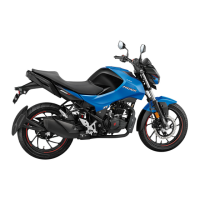
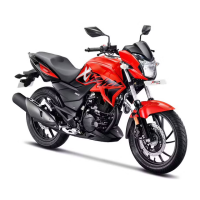

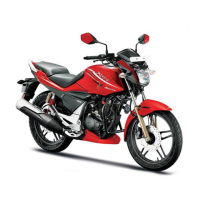
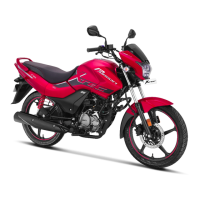
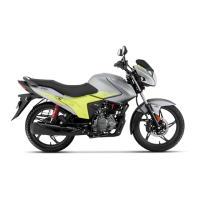
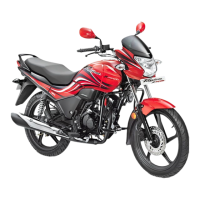
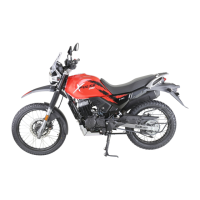
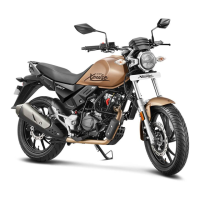
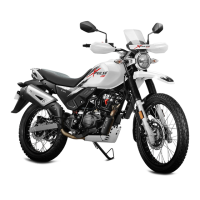
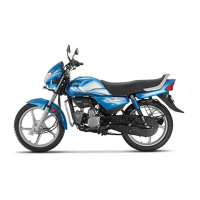
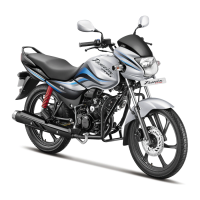
